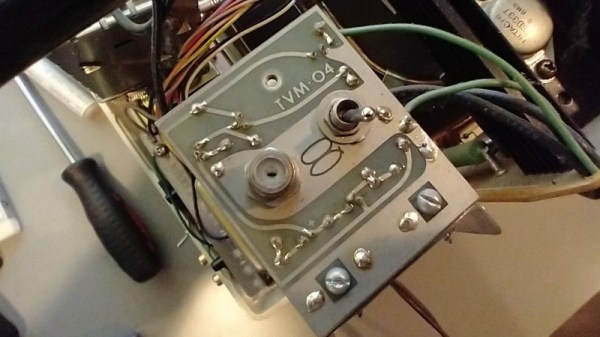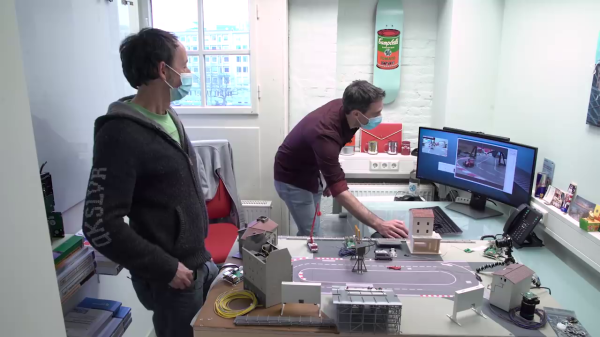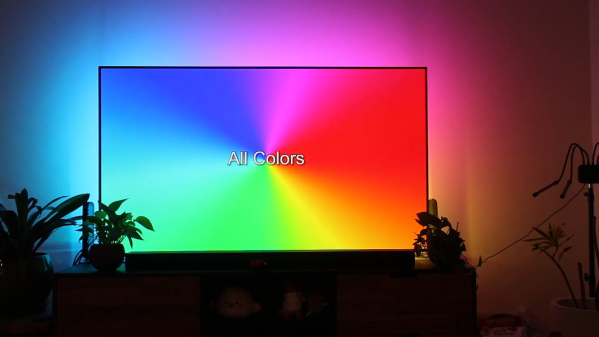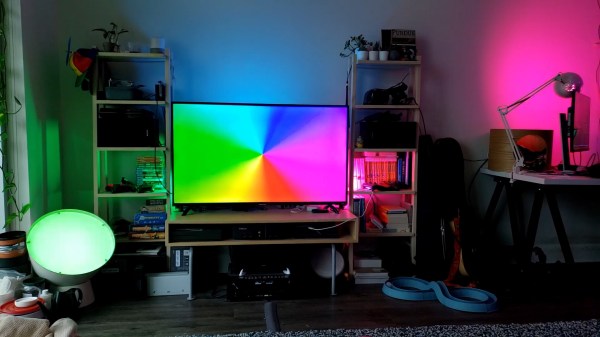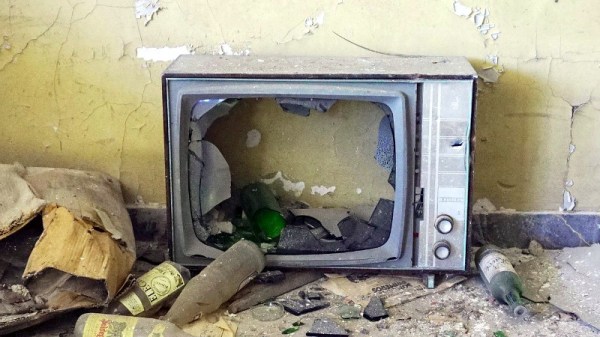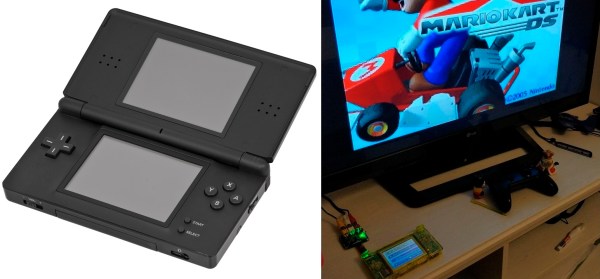[John Floren] found a nice old black & white TV in a thrift store, and as so many of us would, he decided to take it home. He was surprised upon getting it there that it had, in addition to the VHF and UHF antenna inputs, a mysterious extra connector on the back. Naturally, he set about investigating.
On the rear was an obviously hacked-in F-type connector, paired with a toggle switch, both unlabelled. Running the output of an RF modulator to the connector didn’t net an image on the screen, even though the same method worked when hooked up to the antenna inputs. Undeterred, [John] dug deeper.
Inside, a little PCB bearing the mark “TVM.04” was inside, bearing a handful of components. The device turned out to be a Pickes and Trout TVM-04 adapter, designed in the 1970s for hooking a computer up to a television for use as a monitor. The adapter board allows the Hitachi TV to accept a composite video input. [John] was able to test the TV with a NES clone outputting composite video and voila, it worked! [John] then went further, adding an audio input and installing standard RCA jacks to make it easier to use the input with more modern electronics.
It’s a great example of how simply opening up some electronics and poking around can teach you something. Hacking on old-school TVs is a popular pastime around these parts, it seems. If you’ve been working on your own retro display hack, be sure to let us know.

